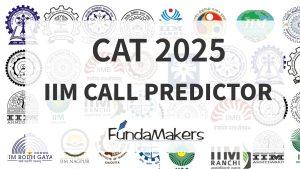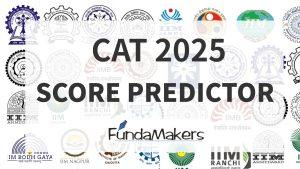Reading philosophy-based passages for the CAT exam is crucial because it enhances critical thinking and comprehension skills, both of which are essential for success in the test. Philosophy texts often present complex arguments, abstract concepts, and dense language that require careful analysis and interpretation. Engaging with these passages helps students develop the ability to understand nuanced ideas, draw inferences, and evaluate arguments logically—skills that are invaluable not only for the Verbal Ability and Reading Comprehension section of the CAT but also for overall academic and professional excellence. Additionally, the practice of dissecting philosophical writings trains candidates to handle the diverse and challenging reading material they will encounter in their management studies and careers.
Let’s have a look at some passages related to Philosophy;
Passage 1.
The universe has long been perceived through an anthropocentric lens, attributing causes, purposes, and natural order to its workings. Ancient Greek philosophers like Plato and Aristotle viewed the world teleologically, interpreting phenomena as driven by underlying intentions. However, skeptics such as Democritus and Lucretius advocated for a naturalistic perspective, emphasizing the role of matter obeying rules rather than pursuing final causes. It wasn’t until the advancements in physics by figures like Avicenna, Galileo, and Newton that the idea of the universe evolving autonomously gained traction. Pierre-Simon Laplace further elucidated this concept, proposing that the universe operates according to deterministic laws where its future states can be precisely determined from its current state. This perspective contrasts sharply with the notion of a purpose-driven universe and has significant implications for understanding both the physical and social worlds.
Questions:
- Who among the following ancient Greek philosophers viewed the world teleologically?
- A) Democritus
- B) Plato
- C) Lucretius
- D) Avicenna
- Correct Answer: B) Plato
- Which of the following best describes the perspective advocated by Democritus and Lucretius?
- A) Teleological
- B) Naturalistic
- C) Anthropocentric
- D) Deterministic
- Correct Answer: B) Naturalistic
- According to Pierre-Simon Laplace, what determines the future states of the universe?
- A) Divine intervention
- B) Random chance
- C) Deterministic laws of physics
- D) Human actions
- Correct Answer: C) Deterministic laws of physics
- How does the article suggest humans perceive events like the death of a child or a random shooting?
- A) As part of a hidden plan
- B) As random occurrences
- C) As guided by divine intervention
- D) As predetermined by human actions
- Correct Answer: A) As part of a hidden plan
Passage 2
The writer expresses skepticism about whether literary criticism is suitable for young students. They argue that young readers often naturally respond to literature through parody or imitation rather than analytical critique. The author warns against teaching approaches that encourage suspicion toward all literary works, which they acknowledge arises from a desire to protect students from deception and manipulation in a world full of sophistry and propaganda. However, they caution that this attitude may hinder students’ ability to appreciate and understand good literature. The writer emphasizes the importance of approaching literature with openness and vulnerability, suggesting that readers must be willing to be “taken in” by a work in order to truly understand it. They propose that exposure to quality literature is the best defense against poor writing, likening it to the way genuine relationships protect against deceitful individuals.
Questions:
- What does the author believe is the natural response of young readers to literature?
- A) Analytical critique
- B) Parody or imitation
- C) Blind acceptance
- D) Apathy
- According to the author, what is a consequence of teaching approaches that encourage suspicion towards literary works?
- A) Improved critical thinking skills
- B) Increased appreciation for literature
- C) Hindered ability to understand good literature
- D) Enhanced creativity
- What does the author suggest is necessary for readers to truly understand a poem?
- A) Approaching it with skepticism
- B) Mimicking the poet’s style
- C) Being open to being deceived
- D) Analyzing every line meticulously
- What analogy does the author use to illustrate the importance of exposure to quality literature?
- A) Shield against ignorance
- B) Armor against deception
- C) Protection against bad writing
- D) Guard against manipulation
Passage 3.
If you believe that humans are causing unprecedented destruction to the planet, you’re suffering from an inflated sense of the significance of our species. Humans aren’t the first to pollute the Earth to the point of extinction for other creatures. Interestingly, this phenomenon has occurred before and has played a crucial role. Had it not been for certain microbes causing an environmental catastrophe over 2 billion years ago, humans and our ancestors might never have come into existence. Throughout Earth’s history, apocalyptic events resulting in mass extinction have often paved the way for the emergence of new forms of life. To understand these peculiar disasters, let’s journey back to the origins of our planet. Earth, approximately 4.5 billion years old, harbored an atmosphere inhospitable to humans and most current life forms for much of its existence. The environment was characterized by vast acidic oceans and extreme greenhouse conditions, with superheated air filled with methane and carbon. The planet’s surface, now covered in water and soil, was once a tumultuous expanse of magma. During this period, life began to take shape. Around 2.5 billion years ago, during the Proterozoic eon, resilient microbes capable of surviving in such harsh conditions emerged. These microbes, known as cyanobacteria or blue-green algae, formed intricate mats of vegetation on the ocean’s surface, resembling dark, frothy coats with trailing tendrils underwater. The remnants of this ancient life can be found in enigmatic fossils preserved within a distinct type of ancient rock known as stromatolite, characterized by thin, dark lines resembling fingerprint whorls, remnants of those algal mats.
Questions:
- What is the primary assertion made about humans’ impact on the planet?
a) It is historically unprecedented.
b) It is negligible.
c) It is beneficial.
d) It is insignificant.
Correct answer: a) It is historically unprecedented.
2. How does the article describe the significance of past environmental catastrophes?
a) They led to the extinction of all life forms.
b) They had no impact on the evolution of life.
c) They facilitated the emergence of new life forms.
d) They resulted in irreversible damage to the planet.
Correct answer: c) They facilitated the emergence of new life forms.
3. What is the role of cyanobacteria in the narrative?
a) They caused the extinction of other microbial species.
b) They formed intricate mats of vegetation in ancient oceans.
c) They are responsible for the creation of stromatolite rocks.
d) They thrived in a hospitable environment.
Correct answer: b) They formed intricate mats of vegetation in ancient oceans.
4. How are stromatolites described in the text?
a) They are modern-day formations.
b) They contain remnants of ancient algal mats.
c) They are composed entirely of magma.
d) They are characterized by smooth surfaces.
Correct answer: b) They contain remnants of ancient algal mats.
Test your Caliber with us!
FundaMakers provide a series of RCs, and previous year questions based on RCs on our site. Tap on ” CAT Question Bank” and visit our Question bank section perfectly tailored for CAT aspirants.
CAT QUESTION BANK
Visit the link below to go through Reading Comprehensions based on World-War for CAT Preparation:



